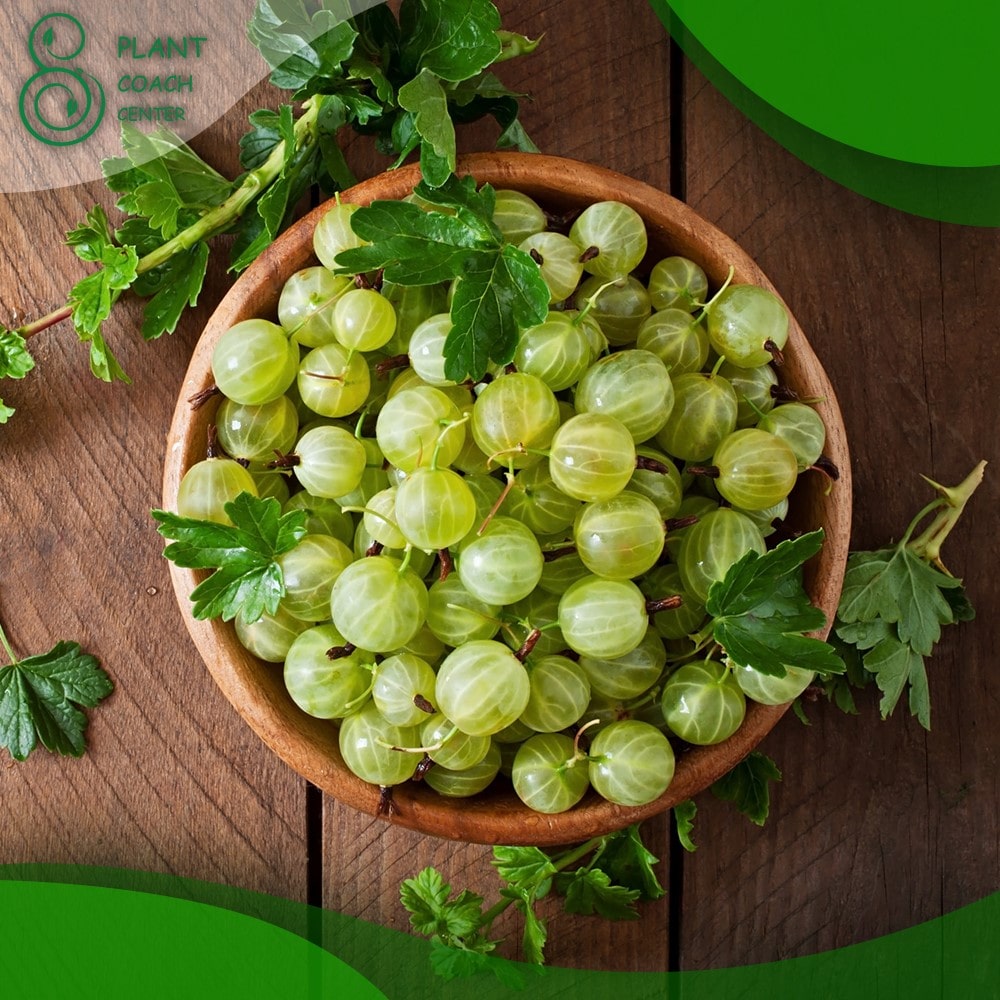Introduction to When to prune gooseberry bushes
Gooseberry bushes, with their delicate foliage and clusters of succulent berries, have long captivated the hearts of gardeners. These enigmatic shrubs possess a certain mystique that draws both seasoned horticulturists and newcomers to their care. Their appeal lies not only in the promise of tangy-sweet fruits but also in their unique growth patterns that require a watchful eye. Yet, taming the unruly branches of a gooseberry bush can be akin to solving a puzzle. And here’s the key piece: timing.
Pruning, a critical aspect of gooseberry care, hinges on when it’s done. The art of trimming these bushes is not just about snipping away aimlessly but understanding the rhythms of the seasons and the bush’s response to them. Timing isn’t merely a factor; it’s the linchpin of successful gooseberry pruning. As we embark on this journey, we’ll delve deep into the world of gooseberry bushes and unveil the secrets of when to prune them.
In this article of plantcoachcenter.com From deciphering their growth stages to mastering the art of precise cuts, we’ll equip you with the knowledge and techniques needed to nurture healthy, thriving gooseberry bushes. So, fasten your gardening gloves and sharpen those pruning shears as we explore the nuanced realm of gooseberry bush care.
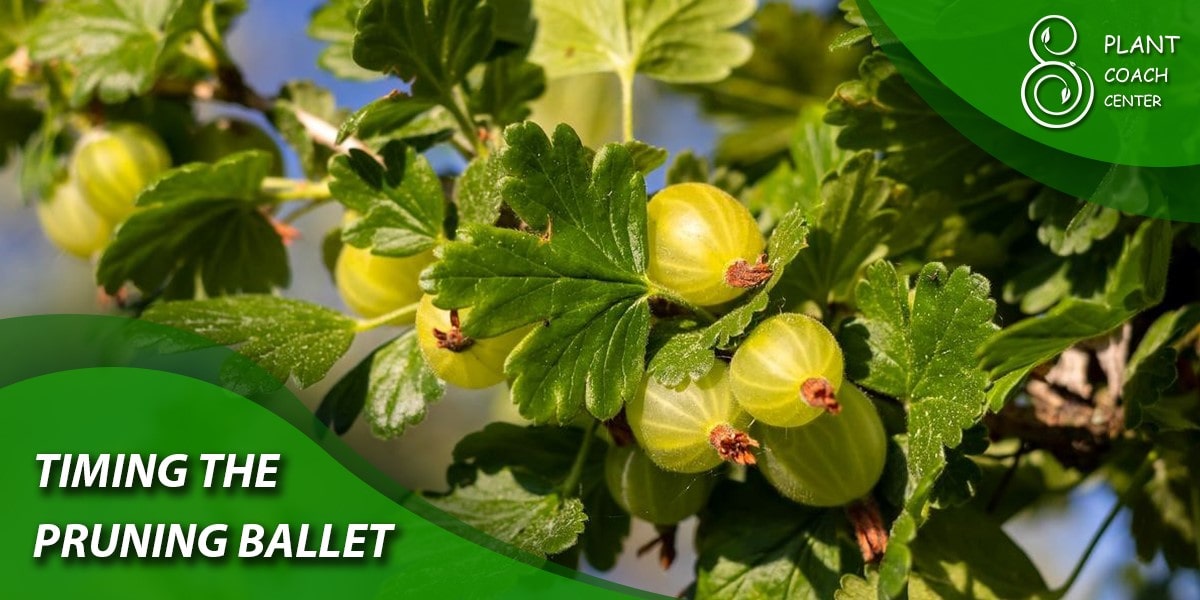
Timing the Pruning Ballet
Spring Serenade: The Perfect Timing
Pruning your gooseberry bushes in early spring is akin to orchestrating a harmonious serenade for optimal growth. This timing, in many ways, is nature’s cue for rejuvenation. Here’s why it’s the ideal moment to commence your pruning endeavor:
Advantages of Early Spring Pruning: Early spring, just before the onset of new growth, is the gold standard for gooseberry pruning. During this period, the plant is still dormant, and its energy is concentrated in the roots. Pruning now encourages the redirection of that stored energy towards developing new shoots and, eventually, fruit production. This results in vigorous growth and a bountiful harvest later in the season.
Guarding Against Late Frosts and Chills: Pruning in early spring also minimizes the risk of exposing your gooseberry bush to late frosts or cold snaps. Removing excess growth while the plant is still in its winter slumber reduces its vulnerability to damage. It’s a proactive approach to protect your bushes from the unpredictable weather patterns of early spring.
Winter Whispers: An Alternative Approach
For those who miss the early spring window or reside in regions with milder winters, late winter pruning can be a viable alternative. Although it’s not the primary choice, it can be successful with careful planning and execution:
Pruning Hints for Late Winter: Late winter, just before the buds begin to swell, offers a second chance for pruning. However, it demands extra caution. Begin by removing dead or diseased wood, as well as any crowded or crossing branches. This clears the way for healthy growth and ensures that the plant’s energy is not wasted on unproductive limbs.
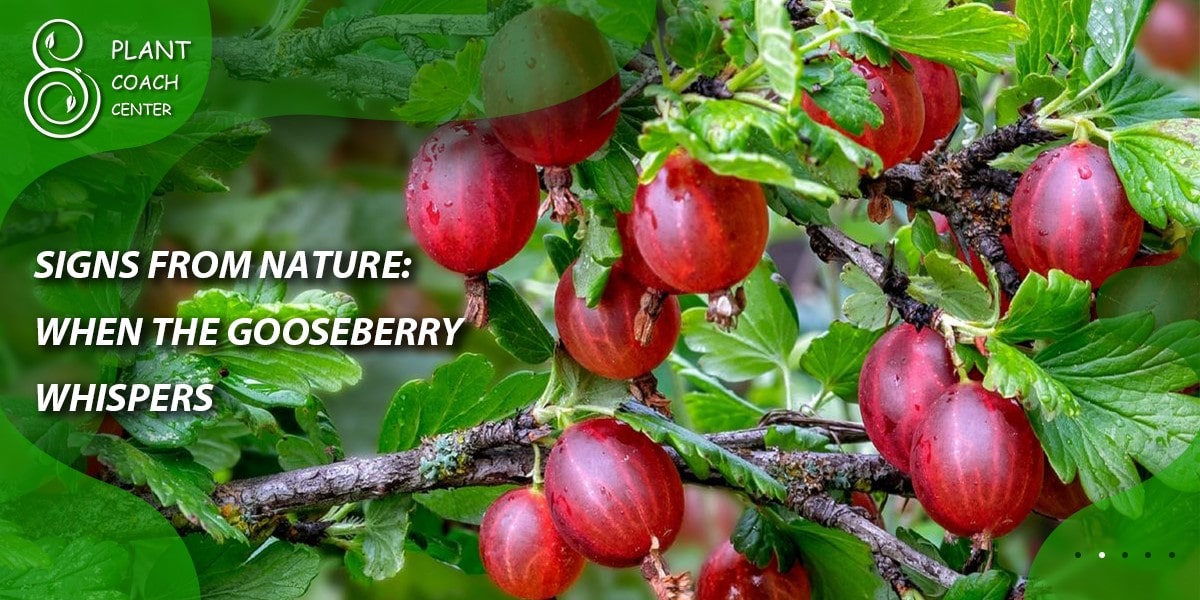
Navigating the Frost Risks: Late winter pruning carries the risk of exposing the plant to frost damage. To mitigate this, choose a day when the temperatures are above freezing, ideally in the afternoon when the sun has had a chance to warm the plant. Prune conservatively, focusing on structural improvements rather than heavy pruning.
In essence, the timing of your pruning ballet depends on your local climate and the condition of your gooseberry bushes. While early spring is the preferred time, late winter can still be effective if done thoughtfully. Regardless of the timing, the key is to prune with precision and purpose, setting the stage for a vibrant, fruitful gooseberry bush.
Signs from Nature: When the Gooseberry Whispers
Unveiling the Winter’s Mark
Detecting signs of winter damage on your gooseberry bushes is crucial to understanding the state of your plant’s health. Winter can be harsh, and its effects can manifest in various ways:
Detecting Signs of Winter Damage: Examine your gooseberry bush carefully as winter gives way to spring. Look for canes that appear discolored, shrunken, or withered. These are telltale signs of winter injury. Additionally, inspect the bark for splitting or peeling, which can result from freezing temperatures. If you notice these symptoms, it’s essential to take action promptly to mitigate further damage.
Listening to the Plant’s Lament
Your gooseberry bush can communicate its distress through its branches and leaves. Identifying ailing or lifeless wood is a key step in understanding the plant’s needs:
Identifying Ailing or Lifeless Wood: Lifeless branches, devoid of any buds or signs of life, are a clear indicator of a problem. These branches may have succumbed to disease, pests, or harsh winter conditions. Use sharp pruning shears to remove these branches entirely, cutting them back to the healthy wood. This not only improves the plant’s appearance but also prevents the spread of potential issues.
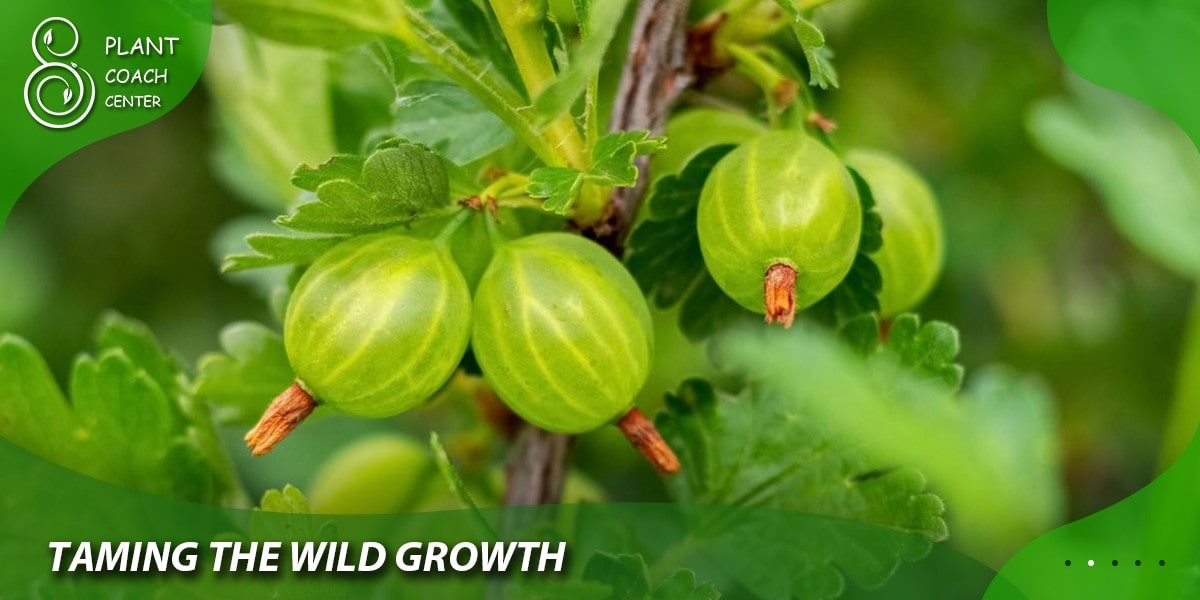
Taming the Wild Growth
Overly exuberant growth can hinder your gooseberry bush’s health and fruit production. Dealing with unruly canes is a vital part of the pruning process:
Dealing with Unruly Canes: Look for canes that have grown out of control, crisscrossing each other or encroaching on the plant’s center. Pruning these canes helps maintain an open and airy structure within the bush. Start by removing the oldest and thickest canes, as they are less productive. This creates space for younger, more vigorous growth.
The Invisible Foe: Diseases and Pests
Gooseberry bushes are not immune to the threats posed by diseases and pests. Vigilance is key to spotting and addressing these issues before they become a serious problem:
Spotting and Addressing Health Issues: Regularly inspect the leaves, stems, and fruit for any signs of disease or pest infestations. Common problems include powdery mildew, aphids, and gooseberry sawfly larvae. If you notice discolored or distorted leaves, sticky residue on the foliage, or signs of insect activity, take immediate action. Use appropriate treatments, such as organic sprays or pruning, to curb the issue and prevent it from spreading.
By closely observing your gooseberry bush for these signs from nature, you can intervene effectively and ensure the plant’s well-being. Early detection and prompt action are the keys to maintaining a healthy and productive gooseberry bush.
Tailoring Pruning Time to Gooseberry Varieties
The Varietal Waltz
Gooseberries, like dancers in a grand ballroom, come in various varieties, each with its unique growth patterns and pruning requirements. To become a true maestro in gooseberry care, understanding how to adapt your pruning time to different varieties is essential:
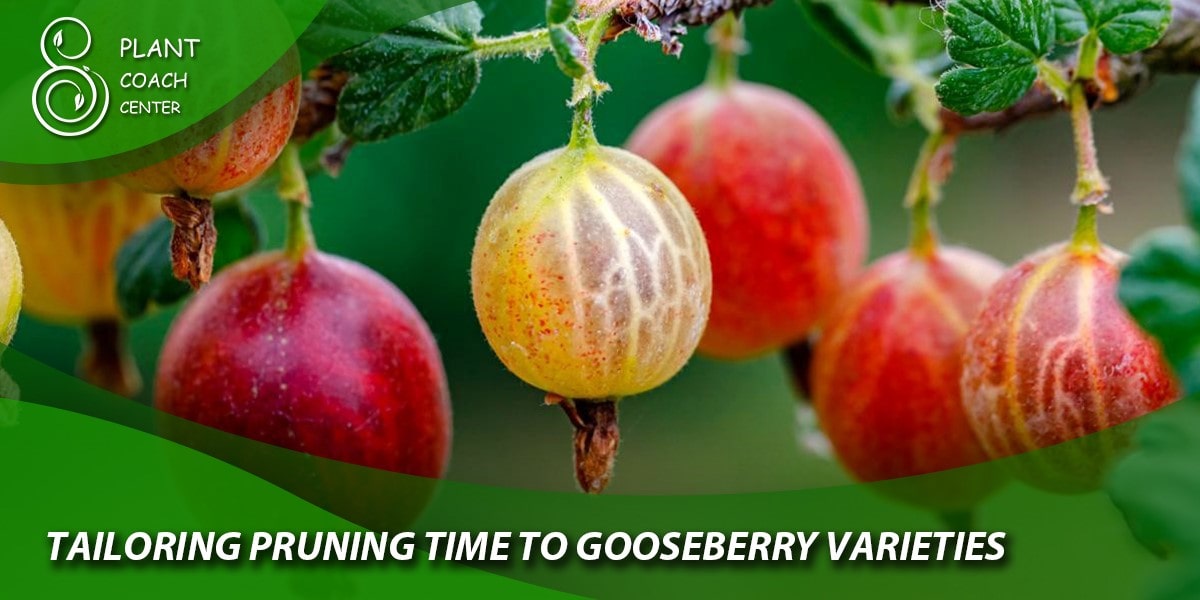
Adapting to Different Growth Patterns: Different gooseberry varieties exhibit distinct growth habits. For instance, red gooseberries often have a more upright and vigorous growth pattern compared to their green or yellow counterparts. This variation in growth informs your pruning approach, as some may require more aggressive pruning to maintain shape and airflow, while others benefit from a gentler touch.
Crafting Your Pruning Time Routine
Tailoring your pruning time to the specific variety you’re cultivating is akin to customizing a tailored suit. It ensures that your gooseberry bush receives the care it needs to flourish:
Personalizing Care for Red, Green, or Yellow Gooseberries:
Let’s delve deeper into the nuances of pruning time for different gooseberry varieties:
Red Gooseberries:
These tend to be more vigorous growers. Pruning them in early spring is crucial to encourage new growth and maintain shape. Since they are prone to overcrowding, selectively thin branches to allow light and air to reach the center of the bush.
Green Gooseberries:
Green gooseberries often exhibit a more restrained growth pattern. Late winter or very early spring pruning suits them best, as it helps in removing dead or damaged wood while preserving their natural form.
Yellow Gooseberries:
Yellow gooseberries fall in between red and green varieties in terms of growth. Early spring pruning is generally suitable, with a focus on maintaining an open structure and removing dead or overly crowded branches.
Customizing your pruning time to match the variety’s characteristics ensures that your gooseberry bush thrives, yielding a healthy crop of delectable berries. Remember, the secret lies in understanding the subtle differences between these varieties and applying the appropriate pruning techniques at the right time.
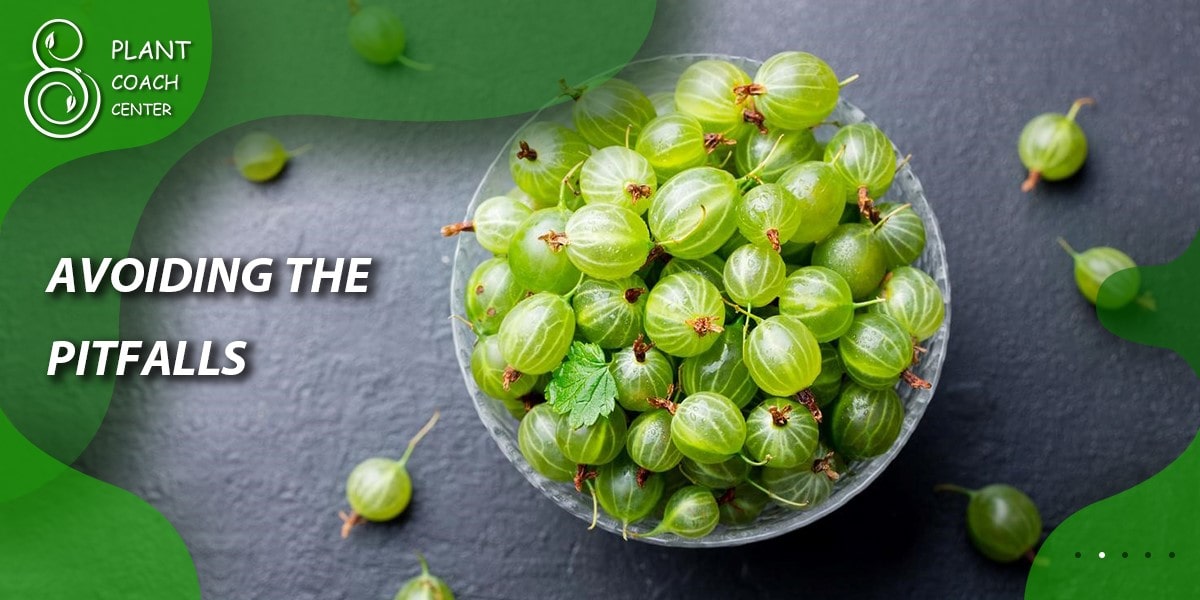
Avoiding the Pitfalls
Timing Troubles
Pruning gooseberry bushes, while essential for their well-being, can become a perilous endeavor if the timing is off. Here’s how to navigate the potential pitfalls of improper pruning seasons:
Navigating the Perils of Improper Pruning Seasons: The timing of your pruning can make or break the health of your gooseberry bush. Pruning too late in the spring may rob the plant of its energy for the growing season. On the other hand, pruning too early in the winter can expose the bush to frost damage. To avoid these pitfalls, follow the guidelines discussed earlier for early spring or late winter pruning, depending on your local climate.
The Stress Tango
While a well-pruned gooseberry bush thrives, excessive pruning can lead to a stressed and weakened plant. Guard against this tango of stress by pruning judiciously:
Guarding Against Over-Pruning and Plant Stress: Overzealous pruning, often fueled by the desire to shape the bush perfectly, can stress your gooseberry plant. Stress, in turn, makes it susceptible to diseases and pest attacks. To prevent this, focus on selective pruning that removes only what’s necessary for the bush’s health and shape. Remember, moderation is the key to a thriving gooseberry bush.
Disease Defense
Pruning is not just about shaping and rejuvenating; it’s also about safeguarding your gooseberry bush from diseases that can plague it. Here’s how to protect your plant during pruning:
How to Prevent Disease During Pruning: Before you begin pruning, ensure your pruning tools are clean and sharp. Dirty or dull tools can introduce pathogens to the plant. Disinfect your pruning shears with rubbing alcohol or a bleach solution. Additionally, remove any diseased branches or leaves carefully and dispose of them far from the garden to prevent disease spread.
The Art of the Pruning Cut
Every cut you make during pruning should be precise and purposeful to avoid unnecessary damage to your gooseberry bush:
Avoiding Damage with Precision Cuts: When making cuts, aim for clean and angled cuts, preferably about a quarter-inch above a bud or branch junction. Avoid leaving stubs, as they can invite disease and pests. Also, be mindful of the angle of the cut; it should slope away from the bud to prevent water accumulation.
By understanding these potential pitfalls and taking preventive measures, you can ensure that your pruning efforts contribute to the health and vitality of your gooseberry bush rather than unintentionally causing harm. Pruning, when done with care and consideration, becomes a nurturing practice that benefits both you and your beloved plants.
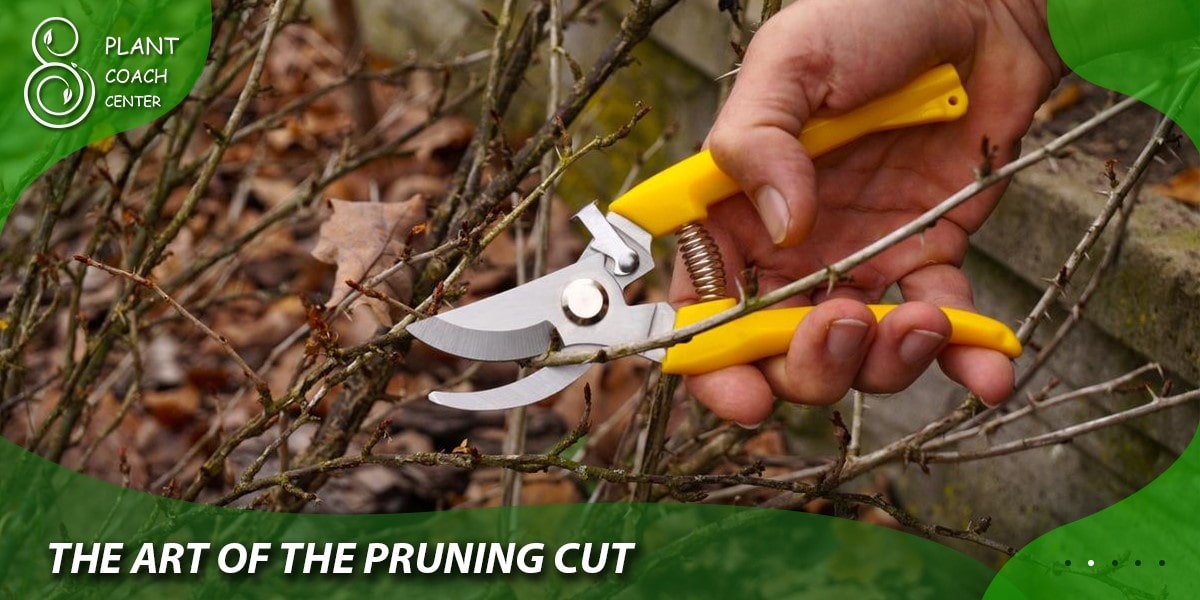
Conclusion
In the world of gardening, timing orchestrates a delicate symphony, and in gooseberry pruning, it’s the lead conductor. The harmonious interplay of when to prune, whether in early spring or late winter, holds the key to unlocking the full potential of your gooseberry bushes. It paves the way for a virtuoso performance, where your bushes thrive, bearing sweet, succulent fruits.
As our journey through the intricacies of gooseberry care draws to a close, it’s a call to action for gardeners everywhere. Embrace the art of gooseberry pruning, a craft rewarding patience, precision, and profound understanding. By synchronizing your efforts with nature’s rhythms, you ensure not only a bountiful harvest but also a deeper connection with the satisfaction of nurturing these enigmatic bushes.
In parting, may the rustling leaves of your gooseberry bushes serve as a reminder of the journey undertaken—a journey of growth, care, and the timeless dance of nature. As you tend to your gooseberry bushes, may your garden flourish, and may your pruning shears always strike a harmonious chord in the evolving symphony of your garden’s life.
FAQs
When is the best time to prune gooseberry bushes?
Early spring or late winter, depending on your climate.
Can pruning be done during late spring or early summer?
It's generally advisable to avoid pruning during late spring or early summer.
Why is late winter pruning recommended for some gooseberry varieties?
Late winter pruning is often chosen to remove dead wood while preserving the plant's form.
Are there specific considerations for pruning green gooseberry bushes in early spring?
Yes, pruning in early spring should focus on maintaining an open structure and removing dead or crowded branches for green gooseberries.
Is late winter or early spring pruning more suitable for yellow gooseberry bushes?
Early spring pruning is generally preferred for yellow gooseberries, emphasizing an open structure and dead wood removal.
What are the risks of pruning gooseberry bushes too early in the winter?
Pruning too early may expose the bush to potential frost damage.


